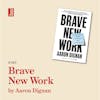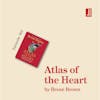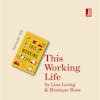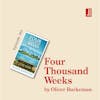Breath by James Nestor: how we're breathing all wrong (and what to do about it)
About the author
James Nestor is an author and journalist who has written for Scientific American, Outside Magazine, BBC, The New York Times, The Atlantic, National Public Radio, Surfer’s Journal, The San Francisco Chronicle, and more.
He’s spent the last several years working on a book called Breath: The New Science of a Lost Art. It released through Riverhead/Penguin Random House on May 26, 2020 and spent 18 weeks of the New York Times bestseller list in the first year of publication.
At home in San Francisco, James runs his 1978 Mercedes-Benz 300D on used cooking oil whenever he can and used to zip around town (correction: breakdown all over town) in a Sebring-Vanguard CitiCar, the first-ever American-made production electric vehicle, which barely ever worked and was later offloaded on some dude with purple suspenders in Eugene, Oregon.
Source: https://www.mrjamesnestor.com/about
About the book
There is nothing more essential to our health and well-being than breathing: take air in, let it out, repeat 25,000 times a day. Yet, as a species, humans have lost the ability to breathe correctly, with grave consequences.
Journalist James Nestor travels the world to figure out what went wrong and how to fix it. The answers aren’t found in pulmonology labs, as we might expect, but in the muddy digs of ancient burial sites, secret Soviet facilities, New Jersey choir schools, and the smoggy streets of Sao Paulo. Nestor tracks down men and women exploring the hidden science behind ancient breathing practices like Pranayama, Sudarshan Kriya, and Tummo and teams up with pulmonary tinkerers to scientifically test long-held beliefs about how we breathe.
Drawing on thousands of years of medical texts and recent cutting-edge studies in pulmonology, psychology, biochemistry, and human physiology, Breath turns the conventional wisdom of what we thought we knew about our most basic biological function on its head. You will never breathe the same again.
Source: https://www.mrjamesnestor.com/#/breath-book/
Big idea #1 —Our changing faces
There are over 5,400 known species of mammals, but humans are the only ones with regular misaligned jaws, under and overbites, and snuggled teeth. Evolution isn’t always better, it’s just change. And we are at a point now, and have been for several thousands of years, where we’re passing down these unhealthy and unhelpful deformities to future generations.
This change started before homo-sapiens were even sapiens. There’s a full timeline in the book, but over the last hundred of thousands of years, our species changed, we ate different food, which made our brains grow much, much bigger, which in turn meant that they needed more space in our skulls. Our brains stole this space from our sinuses, our airways and our mouths, which then shrunk our faces. You can see this in comparing the skulls of modern homo-sapiens to prehistoric sapiens.
By processing and cooking food, even in a very primitive way, we started chewing less, which resulted in our jaws were getting looser, weaker, and changed the shape of our face. Learning to speak dropped our larynx and pushed our tongues back, creating too much space at the back of our throat, meaning that we are the only mammals, and the only sapiens that can choke. We even do that in our sleep; through snoring and sleep apnea.
As we evolved, those in colder climates developed long, thin noses, which were able to warm up the cold air before it reached out lungs. Those in warm and humid climates had flatter noses, which is much more efficient for processing that humid air ready to hit the lungs.
But look at us now. We are not breathing well, we’re snoring, we stop breathing altogether as we sleep with sleep apnea, and never mind our teeth. These things are all unique deformities of the human race, rather than something that is prevalent in mammals more generally. So our big old brains haven’t been that good for us.
Big idea#2 — We’re breathing wrong
First things first; mouth breathing is very bad.
Mouth breathing, it turns out, changes the physical body and transforms airways all for the worse. Inhaling air through the mouth decreases pressure, which causes the soft tissues in the back of the mouth to become loose and flex inward, creating less space and making breathing more difficult. Therefore mouth breathing begets more mouth breathing.
Our small mouths cause our teeth overcrowding, and many other issues. Sleeping with an open mouth makes it even worse, because gravity blocks the airways and therefore that’s when we get snoring and sleep apnea.
In the book, James talks about his experiment (which sounds absolutely horrific) where he had his nose blocked up with padding for 10 days, to test exactly what happens when you can only breathe through your mouth.
By the end of the experiment, his snoring was 4,800% worse than it was at the beginning of of the experiment, and he was having 25 apnea episodes a night. Some were so bad that he actually dropped below 90% oxygen, which on an ongoing basis can cause all sorts of issues.
Some studies show that sleep apnea and snoring (ie poor breathing / mouth breathing at night) lead to things like bed-wetting, ADHD, diabetes, high blood pressure, and cancers. The Mayo Clinic now says that chronic insomnia is actually a breathing problem, not a psychological one. One Japanese study, showed that mouth breathing reduces oxygen to the prefrontal cortex, which is associated with ADHD.
Another bad breathing habit we have is holding our breath, particularly when we’re maybe sat at our desks at work and having a bit of a stressful day.
There was some really interesting research and studies that have been done of indigenous groups of people who are living in a less modernised way, and some of their practices around breathing. Even though these groups of people are in completely different continents, they all had really similar techniques and ways of breathing, which were much more unfettered by some of the modern ways of living that we have. And their dental structures, facial shapes, and respiratory health are much better for it.
James talked about one particular Native American group of people who wouldn’t even smile with their mouth open in case some dirty unfiltered air crept into their mouth. They felt so strongly that nose breathing is the clean way to breathe, and mouth breathing was quite a dirty way to breathe because you’re not filtering the air.
Big idea #3 — How to breathe better
You may have already gathered the breathing better way is through your nose as a starting point.
(Note: all of the following techniques and ideas are covered more thoroughly in the book and here on James’ website, this is obviously a very high level overview and NOT medical instruction, so don’t do anything silly)
At night one option to train yourself to breathe through your nose is to put a little piece of medical tape over your lips, which starts to tease them closed at night.
The other thing we can be doing is increasing our lung capacity, there is some quite interesting research into the link between lung capacity and longevity / health. We can increase our lung capacity by taking really long out breaths, and accessing the full lung capacity, rather than just the little, short, shallow breaths. This technique is a used lot by athletes, particularly around better using the exhale.
We’ve also become over breathers. In today’s modern age is between 12 and 20 breaths per minute, taking in about half a liter each time, which is almost twice as much as it used to be at the high end of that range. So we can practice slower breathing. Aiming for around 5.5 breaths per minute, practicing fewer inhales and exhales at a smaller volume.
Another way of improving our breathing is by chewing more. Now you don’t need to go and start eating bark and sticks like some of our prehistoric ancestors did, but even using gum (particularly chewy gum, rather than the soft squishy ones) will help. It can strengthen our facial bones and jaws and help open up the airways.
There’s also various yoga breathing techniques, for example, alternate nasal breathing, and box breathing, which you may be familiar with from yoga or meditation practice.
There’s also some quite advanced methods as well, which come with a whole plethora of different warnings and caveats, such as the Wim Hof method, some of which you can not practice if you have heart conditions, are driving, operating heavy machinery, or are anywhere near some water!
James’s website contains a whole little video section with some of these techniques that you can practice at home and build your breathing repertoire.
Support my book habit: https://www.buymeacoffee.com/stephsbookshelf
See omnystudio.com/listener for privacy information.
Hey, have you subscribed to the bookmark newsletter? If you liked this, you might like my twice-monthly email with book reviews and ideas of what you should be reading, and listening to, next. Click here to subscribe.
Popular episodes
Here are some great episodes to start with.

















